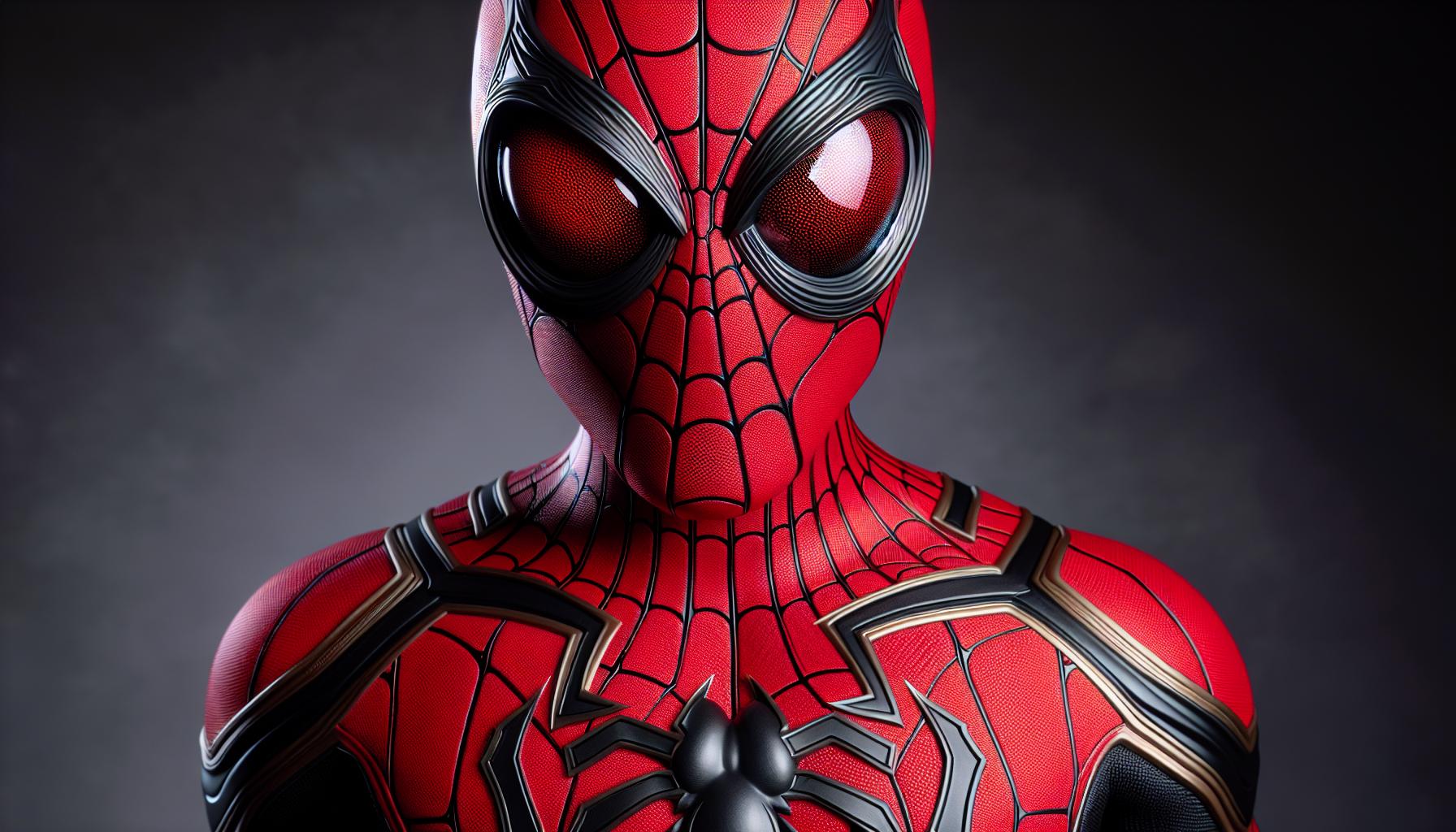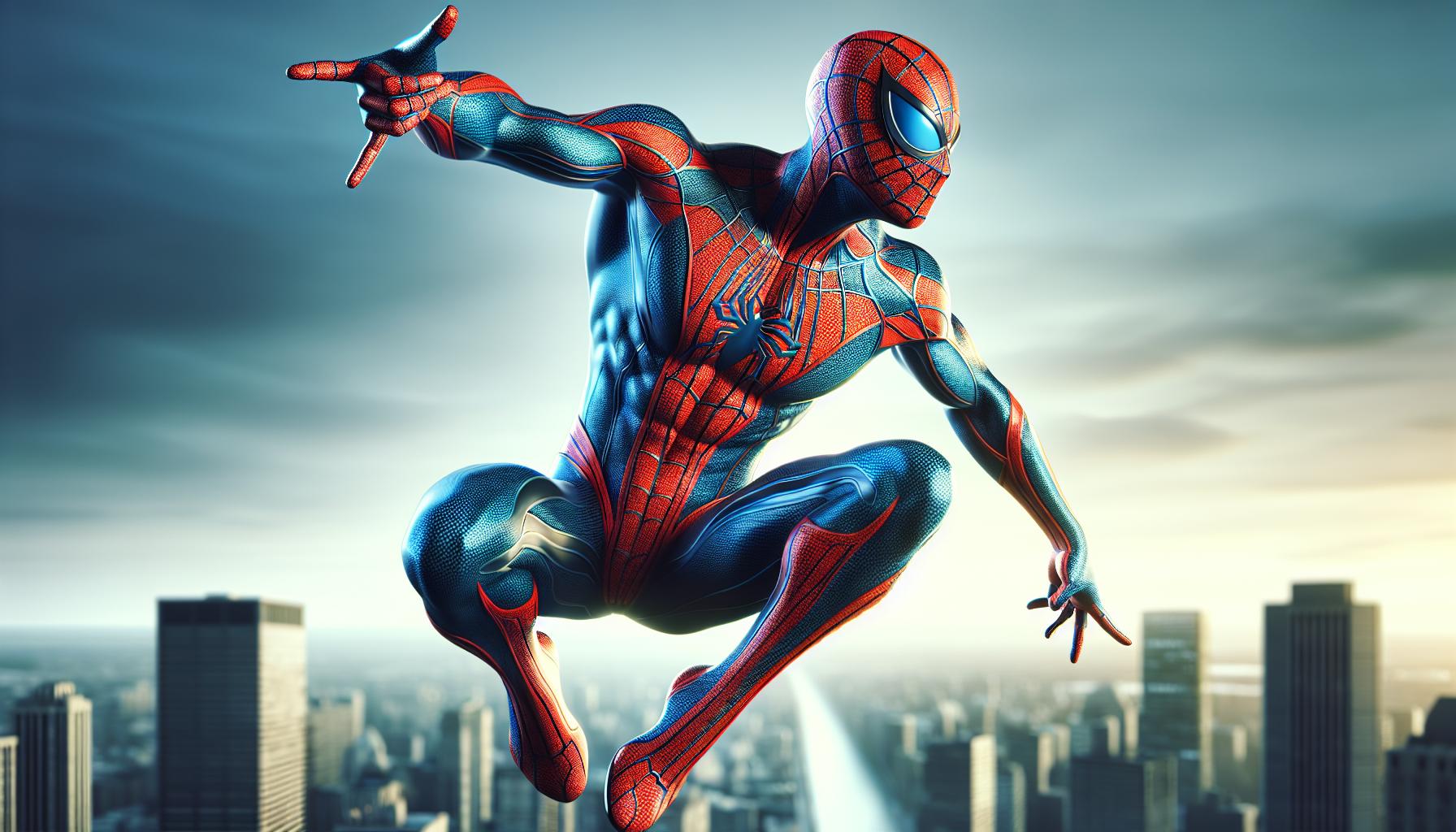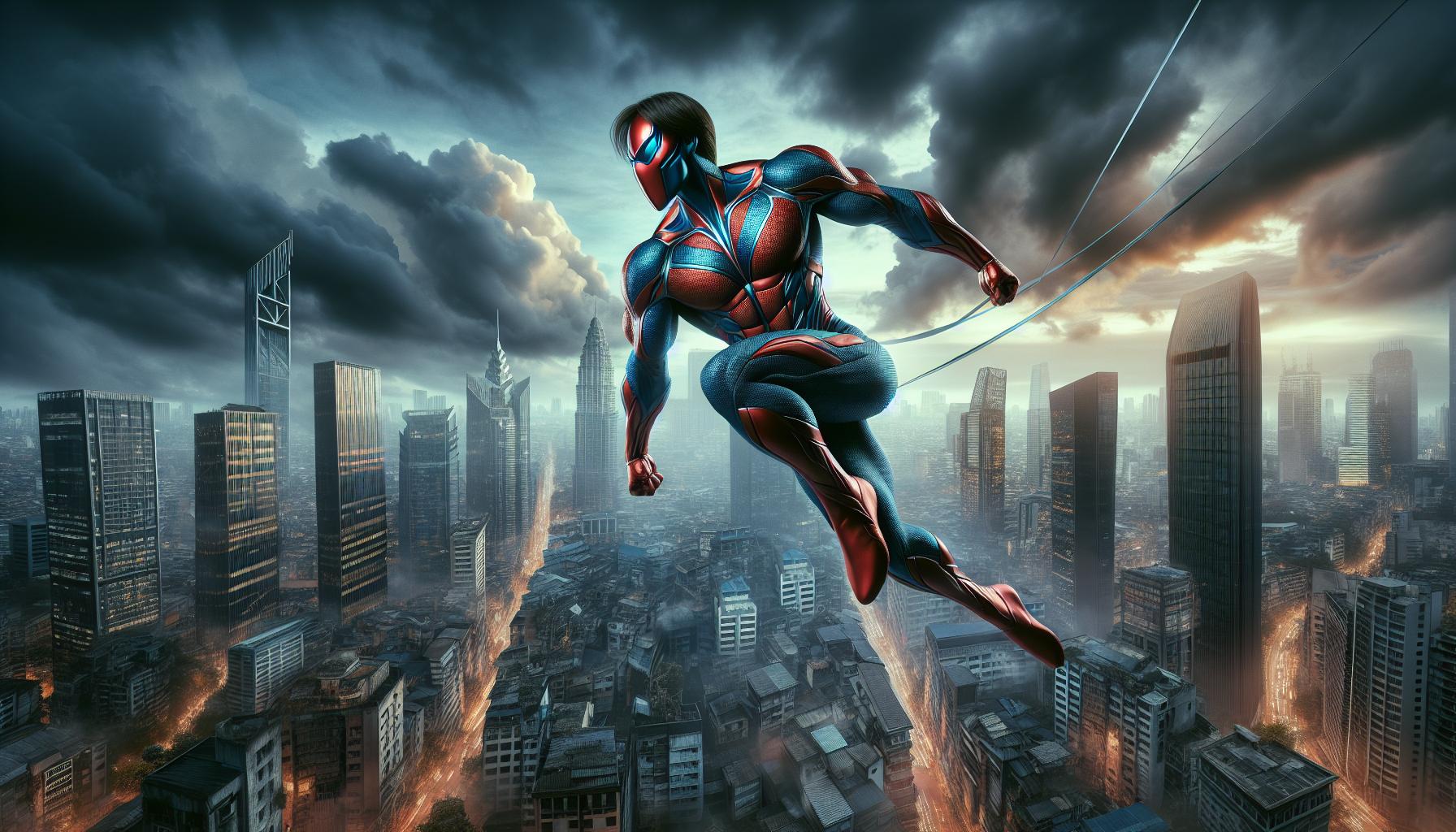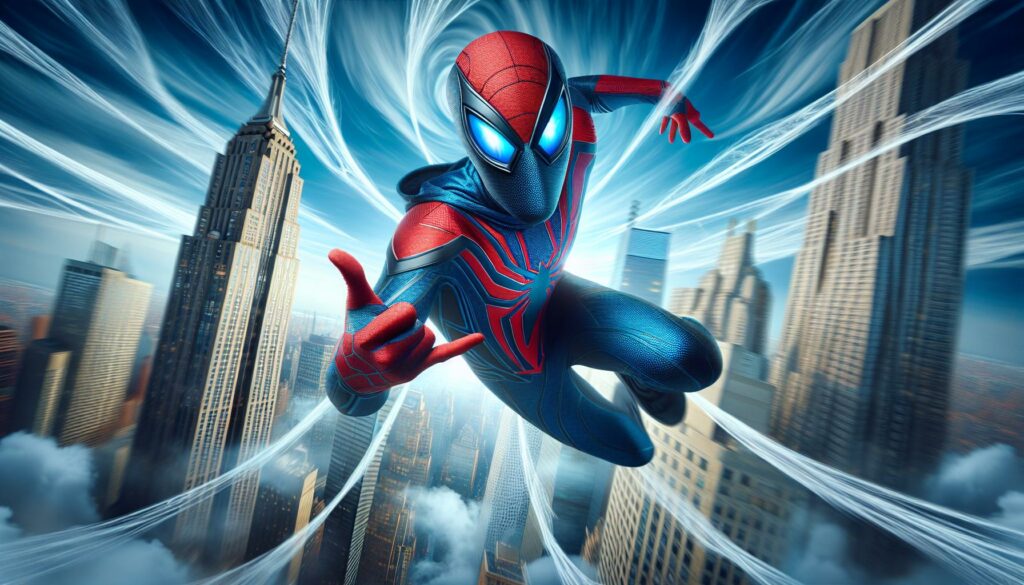Unleashing your inner artist has never been more thrilling than when drawing everyone’s favorite web-slinger. Spider-Man’s dynamic poses and iconic costume make him a perfect subject for both beginners and seasoned artists looking to enhance their superhero drawing skills.
With simple step-by-step instructions and a few basic art supplies anyone can learn to draw the amazing Spider-Man. Whether it’s for a budding young artist’s sketchbook or a fan’s passion project creating your own Spidey artwork brings the excitement of Marvel’s beloved character right to your fingertips. Let’s swing into the creative process and discover just how easy it can be to bring your friendly neighborhood Spider-Man to life on paper.
Facil:zydciy5wqce= Dibujo Spiderman
Creating Spider-Man artwork starts with mastering fundamental techniques and gathering the right supplies. This section covers essential materials and basic proportions to help artists capture the web-slinger’s iconic look.
Essential Art Supplies Needed
Drawing Spider-Man requires a specific set of art materials:
- HB pencils for initial sketching
- 2B pencils for defining details
- Erasers (kneaded rubber + vinyl)
- Smooth drawing paper (9″x12″ minimum)
- Black fineliner pens (0.3mm – 0.8mm)
- Red + blue colored pencils or markers
- White gel pen for highlights
- Ruler for straight lines
- Reference images of Spider-Man
Understanding Spider-Man’s Basic Proportions
Spider-Man’s figure follows standard superhero proportions with unique characteristics:
- Head size equals 1/7th of total body height
- Shoulders span 3 head widths
- Torso measures 2.5 head lengths
- Arms extend to mid-thigh when relaxed
- Legs comprise 4 head lengths
- Chest features spider emblem centered
- Eyes span 1/3 of mask width each
- Web pattern aligns with muscle groups
- Fingers extend past mid-thigh
- Feet length equals head length
These measurements create Spider-Man’s athletic build while maintaining correct anatomical structure.
Drawing Spider-Man’s Iconic Costume

Spider-Man’s costume combines intricate webbing patterns with bold design elements that create his instantly recognizable appearance. The costume’s key features include the web pattern overlay, distinctive spider emblem, and expressive mask design.
Mastering The Web Pattern
The web pattern forms symmetrical lines across Spider-Man’s red sections radiating from a central point. Starting with light pencil guidelines establishes the pattern’s framework through a series of intersecting curved lines. The pattern creates diamond shapes that grow larger toward the edges of each red section. A 0.3mm fineliner pen adds crisp definition to the web lines after establishing the basic grid. The pattern density varies between different artists’ interpretations, with some opting for 6-8 lines per section while others use 10-12 for added detail.
Capturing The Mask Details
The mask features large reflective eye lenses framed by black borders against the red fabric. The eye shapes curve upward at the outer edges creating Spider-Man’s signature aggressive expression. A series of web lines converge at the bridge of the nose extending outward across the mask. The web pattern maintains consistent spacing with 8-10 lines running from the center to each edge. Strategic shading around the cheeks jaw line enhances the mask’s dimensional appearance. The bottom edge of the mask ends at the base of the neck with a clean horizontal line.
Step-by-Step Spider-Man Poses

Spider-Man’s dynamic movements define his character through a combination of athletic agility and acrobatic grace. These pose techniques create compelling illustrations that capture his superhero essence.
Action Poses Made Simple
Drawing Spider-Man in motion starts with a dynamic stick figure skeleton emphasizing fluid movement lines. Position the torso at angles between 15-45 degrees to create swinging motions through city scenes. The limbs extend naturally from the central axis following these proportions:
- Arms span 2.5-3 head lengths when fully extended
- Legs measure 3.5-4 head lengths from hip to foot
- Torso equals 2-2.5 head lengths from neck to hip
Key action poses include:
- Web-swinging with one arm raised
- Wall-crawling on vertical surfaces
- Mid-air acrobatic flips
- Combat stances with bent knees
Static Poses For Beginners
Basic standing poses establish fundamental proportions before attempting complex movements. The classic Spider-Man stance incorporates:
- Feet positioned shoulder-width apart
- Knees slightly bent at 15 degrees
- Arms held at mid-torso level
- Head turned three-quarters view
- Shoulders squared to establish symmetry
- Traditional hands-on-hips superhero pose
- Crouching position with both hands on ground
- Standing straight with web-shooting hand extended
- Basic wall-stick pose with limbs spread evenly
Adding Depth And Dimension

Adding depth and dimension transforms a flat Spider-Man drawing into a dynamic 3D representation. The interplay of light and shadow creates visual impact while maintaining the character’s iconic appearance.
Shading Techniques
Spider-Man’s muscular form comes alive through strategic shading patterns. Cross-hatching techniques define the contours of his costume, with denser lines in shadow areas creating depth. Light sources determine highlight placement on the reflective eye lenses, spider emblem, and web patterns. Gradual transitions from light to dark enhance the form of muscles, particularly in the chest, shoulders, and legs. Directional shading follows the natural flow of the costume’s fabric, emphasizing movement and texture. Burnishing techniques with graphite pencils produce smooth shadows in darker areas like under the arms and between limbs.
Creating Dynamic Backgrounds
Urban environments amplify Spider-Man’s acrobatic nature through perspective and scale. Skyscrapers drawn with vanishing points create dramatic cityscapes that showcase his web-swinging abilities. Building textures incorporate brick patterns, window grids, and architectural details to establish depth. Cloud formations add atmospheric perspective, while motion lines around Spider-Man enhance movement dynamics. Environmental lighting effects cast dramatic shadows across buildings and create silhouettes against bright skies. Street-level elements like lampposts, fire escapes, and billboards provide anchor points for web lines and action sequences.
Tips For Drawing Spider-Man’s Web-Slinging
Spider-Man’s web-slinging poses capture the essence of his dynamic movement through city landscapes. Drawing these action sequences requires attention to specific techniques:
- Web Line Construction
- Draw straight guidelines at 15-degree angles from the wrists
- Create slight curves in the web lines to show tension
- Thicken the web strands closest to Spider-Man’s hands
- Add smaller web strands branching from the main line
- Body Positioning
- Extend arms forward when shooting webs
- Angle the torso at 45 degrees during swings
- Position legs in dynamic splits or tucks
- Rotate shoulders opposite to hip alignment
- Movement Indicators
- Add motion lines behind Spider-Man
- Draw speed streaks parallel to web lines
- Include small debris or wind effects
- Place emphasis on fabric ripples in costume
- Perspective Elements
- Create foreground web attachments to buildings
- Draw vanishing points for proper depth
- Show multiple web strands at different distances
- Include varied building heights for scale
- Action Details
- Focus facial mask lines toward direction of movement
- Create finger positioning for web shooting
- Show muscle tension through costume wrinkles
- Add shadow patterns indicating height
When illustrating web swinging scenes, start with loose sketches to establish the flow of movement. Plot key points where webs connect to buildings. Use reference photos of gymnasts or parkour athletes for natural body positions. Remember web lines follow physics-based arcs while supporting Spider-Man’s weight.
| Body Part | Ratio to Head Size |
|---|---|
| Arm Span | 3 heads wide |
| Torso Length | 2.5 heads long |
| Leg Extension | 4 heads long |
| Web Width | 1/8 head thickness |
Drawing Spider-Man brings out the artist in everyone while celebrating one of Marvel’s most beloved characters. The combination of basic art supplies step-by-step guidance and fundamental techniques makes this creative journey accessible to artists at any skill level.
From mastering the iconic costume details to capturing dynamic poses Spider-Man illustrations offer endless opportunities for artistic growth. Whether starting with simple static poses or advancing to complex web-slinging scenes artists can develop their skills while bringing their favorite superhero to life on paper.
Remember that practice and patience are key to improvement. Each drawing session builds confidence and expertise helping artists create more dynamic and engaging Spider-Man artwork that truly captures the essence of this amazing superhero.

